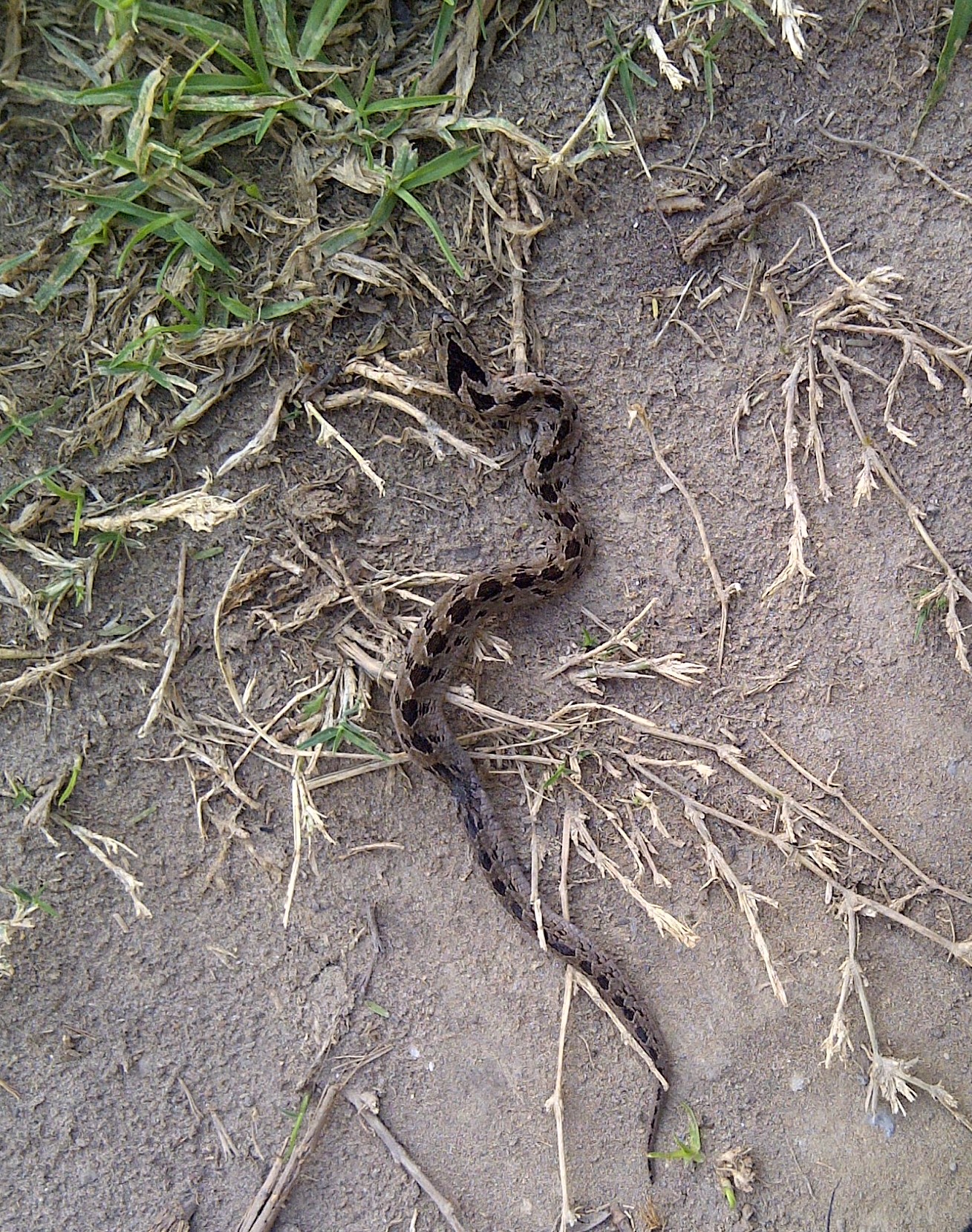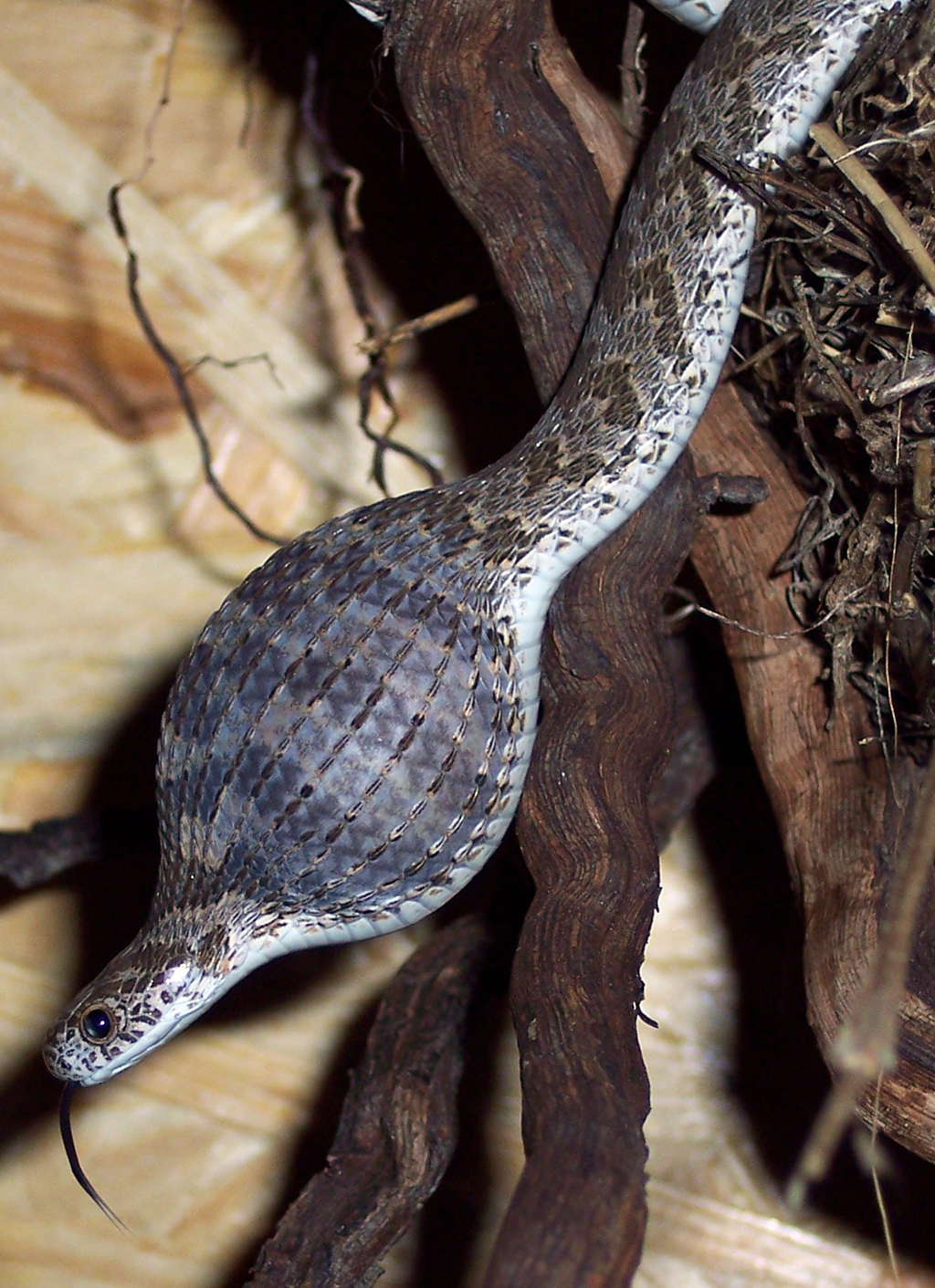|
Dasypeltis Scabra
''Dasypeltis scabra'', also known commonly as the common egg eater, the egg-eating snake, and the rhombic egg eater, is a species of snake in the family Colubridae. The species is endemic to Africa. Geographic range ''D. scabra'' is found in sub-Saharan Africa. Description ''D. scabra'' grows to a total length (tail included) of , and has almost toothless jaws. Dorsally, it has a series of rhomboidal dark brown spots on a lighter background. There is an alternating series of brown spots on each side and a distinct V-shaped mark at the back of the neck. Ventrally it is yellowish, either uniform or with dark dots. Mimicry It has been suggested that non-venomous ''D. scabra'' is a mimic of venomous ''Echis carinatus'', the saw-scaled viper, which it strongly resembles. Typical specimens of ''D. scabra'' even more closely resemble '' Causus rhombeatus'', the rhombic night adder. The colouration of ''E. carinatus'' generally tends to be more reddish and brown, instead of shades of ... [...More Info...] [...Related Items...] OR: [Wikipedia] [Google] [Baidu] |
Carl Linnaeus
Carl Linnaeus (23 May 1707 – 10 January 1778), also known after ennoblement in 1761 as Carl von Linné,#Blunt, Blunt (2004), p. 171. was a Swedish biologist and physician who formalised binomial nomenclature, the modern system of naming organisms. He is known as the "father of modern Taxonomy (biology), taxonomy". Many of his writings were in Latin; his name is rendered in Latin as and, after his 1761 ennoblement, as . Linnaeus was the son of a curate and was born in Råshult, in the countryside of Småland, southern Sweden. He received most of his higher education at Uppsala University and began giving lectures in botany there in 1730. He lived abroad between 1735 and 1738, where he studied and also published the first edition of his ' in the Netherlands. He then returned to Sweden where he became professor of medicine and botany at Uppsala. In the 1740s, he was sent on several journeys through Sweden to find and classify plants and animals. In the 1750s and 1760s, he co ... [...More Info...] [...Related Items...] OR: [Wikipedia] [Google] [Baidu] |
Rhomboid
Traditionally, in two-dimensional geometry, a rhomboid is a parallelogram in which adjacent sides are of unequal lengths and angles are non-right angled. The terms "rhomboid" and "parallelogram" are often erroneously conflated with each other (i.e, when most people refer to a "parallelogram" they almost always mean a rhomboid, a specific subtype of parallelogram); however, while all rhomboids are parallelograms, not all parallelograms are rhomboids. A parallelogram with sides of equal length ( equilateral) is called a ''rhombus'' but not a rhomboid. A parallelogram with right angled corners is a ''rectangle'' but not a rhomboid. A parallelogram is a rhomboid if it is neither a rhombus nor a rectangle. History Euclid introduced the term in his '' Elements'' in Book 1, Definition 22, Euclid never used the definition of rhomboid again and introduced the word parallelogram in Proposition 34 of Book 1; ''"In parallelogrammic areas the opposite sides and angles are equal to on ... [...More Info...] [...Related Items...] OR: [Wikipedia] [Google] [Baidu] |
Habitat
In ecology, habitat refers to the array of resources, biotic factors that are present in an area, such as to support the survival and reproduction of a particular species. A species' habitat can be seen as the physical manifestation of its ecological niche. Thus "habitat" is a species-specific term, fundamentally different from concepts such as Biophysical environment, environment or vegetation assemblages, for which the term "habitat-type" is more appropriate. The physical factors may include (for example): soil, moisture, range of temperature, and Luminous intensity, light intensity. Biotic index, Biotic factors include the availability of food and the presence or absence of Predation, predators. Every species has particular habitat requirements, habitat generalist species are able to thrive in a wide array of environmental conditions while habitat specialist species require a very limited set of factors to survive. The habitat of a species is not necessarily found in a ge ... [...More Info...] [...Related Items...] OR: [Wikipedia] [Google] [Baidu] |
Causus
''Causus'' is a genus of Viperidae, vipers found only in sub-Saharan Africa. It is a group considered to be among the most primitive members of the family Viperidae based on head scalation, oviparity, venom apparatus, and because they have round pupils. However, this is contradicted by recent molecular studies.species:Zoltán Tamás Nagy, Nagy ZT, species:Nicolas Vidal, Vidal N, Miguel Vences, Vences M, Branch WR, species:Olivier Sylvain Gérard Pauwels, Pauwels OSG, species:Michael Wink, Wink M, species:Ulrich Joger, Joger U (2005). "Molecular systematics of African Colubroidea (Squamata: Serpentes)". pp. 221–228. ''In'': Huber BA, Sinclair BJ, Lampe KH (editors) (2005). ''African Biodiversity: Molecules, Organisms, Ecosystems. Proceedings of the 5th International Symposium on Tropical Biology, Museum Koenig, Bonn.Wolfgang Wüster, Wüster, Wolfgang; Peppin, Lindsay; species:Catharine E. Wüster, Pook, Catherine E.; Walker, Daniel E. (2008). "A nesting of vipers: phylogeny and h ... [...More Info...] [...Related Items...] OR: [Wikipedia] [Google] [Baidu] |
Dasypeltis
''Dasypeltis'' is a genus of snakes, also known commonly as egg-eating snakes or egg-eaters, in the subfamily Colubrinae of the family Colubridae. The genus is one of only two taxonomic groups of snakes known to have adapted to feed exclusively on eggs (the other being the genus '' Elachistodon''). ''Dasypeltis'' are non-venomous and found throughout the continent of Africa, primarily in forested or wooded habitats that are also home to numerous species of birds. Species and subspecies There are 18 species of ''Dasypeltis'' that are recognized as being valid, one of which has recognized subspecies. www.reptile-database.org. *'' Dasypeltis abyssina'' – Ethiopian egg-eater *''Dasypeltis arabica'' – Arabian egg-eater *''Dasypeltis atra'' – African egg-eating snake, montane egg-eater *''Dasypeltis bazi'' – Egyptian egg-eating snake, Baz's egg-eating snake *''Dasypeltis confusa'' – confusing egg-eater, diamond-back egg-eater *'' Dasypeltis congolensis'' *'' Dasype ... [...More Info...] [...Related Items...] OR: [Wikipedia] [Google] [Baidu] |
Genus
Genus (; : genera ) is a taxonomic rank above species and below family (taxonomy), family as used in the biological classification of extant taxon, living and fossil organisms as well as Virus classification#ICTV classification, viruses. In binomial nomenclature, the genus name forms the first part of the binomial species name for each species within the genus. :E.g. ''Panthera leo'' (lion) and ''Panthera onca'' (jaguar) are two species within the genus ''Panthera''. ''Panthera'' is a genus within the family Felidae. The composition of a genus is determined by taxonomy (biology), taxonomists. The standards for genus classification are not strictly codified, so different authorities often produce different classifications for genera. There are some general practices used, however, including the idea that a newly defined genus should fulfill these three criteria to be descriptively useful: # monophyly – all descendants of an ancestral taxon are grouped together (i.e. Phylogeneti ... [...More Info...] [...Related Items...] OR: [Wikipedia] [Google] [Baidu] |
Keeled Scales
Keeled Scales is an independent record label based in Austin, Texas. It was founded in 2014 by musicians Tony Presley (Real Live Tigers) and Seth Whaland (Literature, Tres Oui). The label has released over 60 albums from artists such as Buck Meek (of Big Thief), Katy Kirby, Lunar Vacation, Sun June and more. In 2020, the label helped curate a benefit compilation to support the Estok’Gna, an indigenous Texas tribe, in their efforts to protest the building of a gas pipeline through their lands. In 2021, Keeled Scales entered into a partnership with fellow indie label Polyvinyl Records, but still retains creative control over its operations. Also in 2021, the ''Austin Chronicle'' named Keeled Scales “Best Quiet Giant,” praising the label for its “stacked roster and tastemaking reputation.” Discography The following are the albums released by the label: #The Room Outside – ''The Room Outside'' #Real Live Tigers – ''Tomboys'' #The Shivers – ''Charades'' #Ma ... [...More Info...] [...Related Items...] OR: [Wikipedia] [Google] [Baidu] |
Dorsal Scales
In snakes, the dorsal scales are the longitudinal series of plates that encircle the body, but do not include the ventral scales. Campbell JA, Lamar WW (2004). ''The Venomous Reptiles of the Western Hemisphere''. Ithaca and London: Comstock Publishing Associates. 2 volumes. 870 pp. 1,500 plates. . When counting dorsal scales, numbers are often given for three points along the body, for example 19:21:17. These numbers correspond to the number of dorsal scales around the body at a head's length behind the head, at midbody and at a head's length before the vent. If only one number is given, it is for the midbody count. Dorsal scale are easiest to count diagonally, starting with the paraventral scale row. In doing so, it is often noted that certain scale rows are raised, keeled or smooth as opposed to the others.U.S. Navy (1991). ''Poisonous Snakes of the World''. United States Government. New York: Dover Publications Inc. 203 pp. . See also *Snake scales *Anatomical terms of locat ... [...More Info...] [...Related Items...] OR: [Wikipedia] [Google] [Baidu] |
Causus Rhombeatus
''Causus rhombeatus'', commonly known as the rhombic night adder, is a species of venomous snake in the subfamily Viperinae of the family Viperidae. The species is native to Sub-Saharan Africa. No subspecies are recognized as being valid. Description With an average total length (tail included) of , ''C. rhombeatus'' is the largest member of the genus ''Causus''. The longest individual ever recorded was a male, in total length, collected in eastern Zimbabwe. The head has a snout that is relatively blunt (i.e., more rounded than in other members of this genus), on the sides of which the nostrils are positioned. The circumorbital ring consists of 2–3 preoculars, 1–2 postoculars, and 1–2 suboculars that separate the eye from the supralabials. The temporal scales usually number 2+3, sometimes 2+4, but very rarely 2+2 or 3+3. There are 6 supralabial scales, very rarely 7. The sublabial scales usually number 7 or 10, rarely 8, and very rarely 11, 12 or 13. The first 3–4 ... [...More Info...] [...Related Items...] OR: [Wikipedia] [Google] [Baidu] |
Common Egg Eater (Dasypeltis Scabra) (5984406107)
''Dasypeltis scabra'', also known commonly as the common egg eater, the egg-eating snake, and the rhombic egg eater, is a species of snake in the family Colubridae. The species is endemic to Africa. Geographic range ''D. scabra'' is found in sub-Saharan Africa. Description ''D. scabra'' grows to a total length (tail included) of , and has almost toothless jaws. Dorsally, it has a series of rhomboidal dark brown spots on a lighter background. There is an alternating series of brown spots on each side and a distinct V-shaped mark at the back of the neck. Ventrally it is yellowish, either uniform or with dark dots. Mimicry It has been suggested that non-venomous ''D. scabra'' is a mimic of venomous ''Echis carinatus'', the saw-scaled viper, which it strongly resembles. Typical specimens of ''D. scabra'' even more closely resemble ''Causus rhombeatus'', the rhombic night adder. The colouration of ''E. carinatus'' generally tends to be more reddish and brown, instead of shades of ... [...More Info...] [...Related Items...] OR: [Wikipedia] [Google] [Baidu] |
Echis Carinatus
''Echis carinatus'', known as the Sindh saw-scaled viper, saw-scaled viper,Mallow D, Ludwig D, Nilson G (2003). ''True Vipers: Natural History and Toxinology of Old World Vipers''. Malabar, Florida: Krieger Publishing Company. 359 pp. . Indian saw-scaled viper, little Indian viper, a Munich Antivenom Index . Accessed 13 September 2006. and by other #Common names, common names, is a Viperinae, viper species found in parts of the Middle East and Central Asia, and especially the Indian subcontinent. It is the smallest member of the "Big Four (Indian snakes), big four" Indian snakes that are responsible for causing the most snakebite cases and deaths, due to various factors including their frequent occurrence in highly ... [...More Info...] [...Related Items...] OR: [Wikipedia] [Google] [Baidu] |





